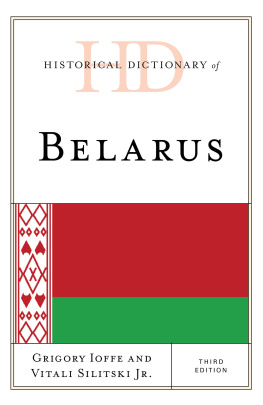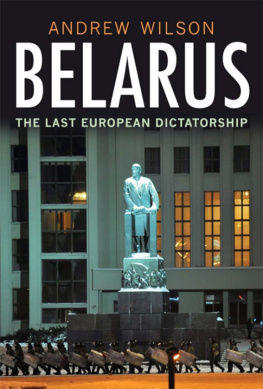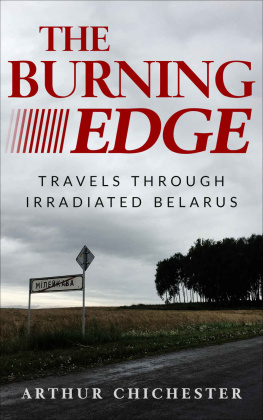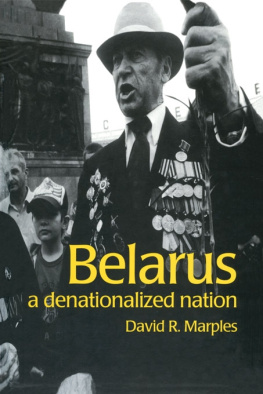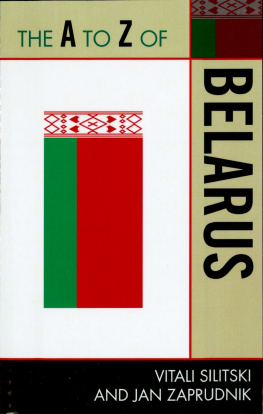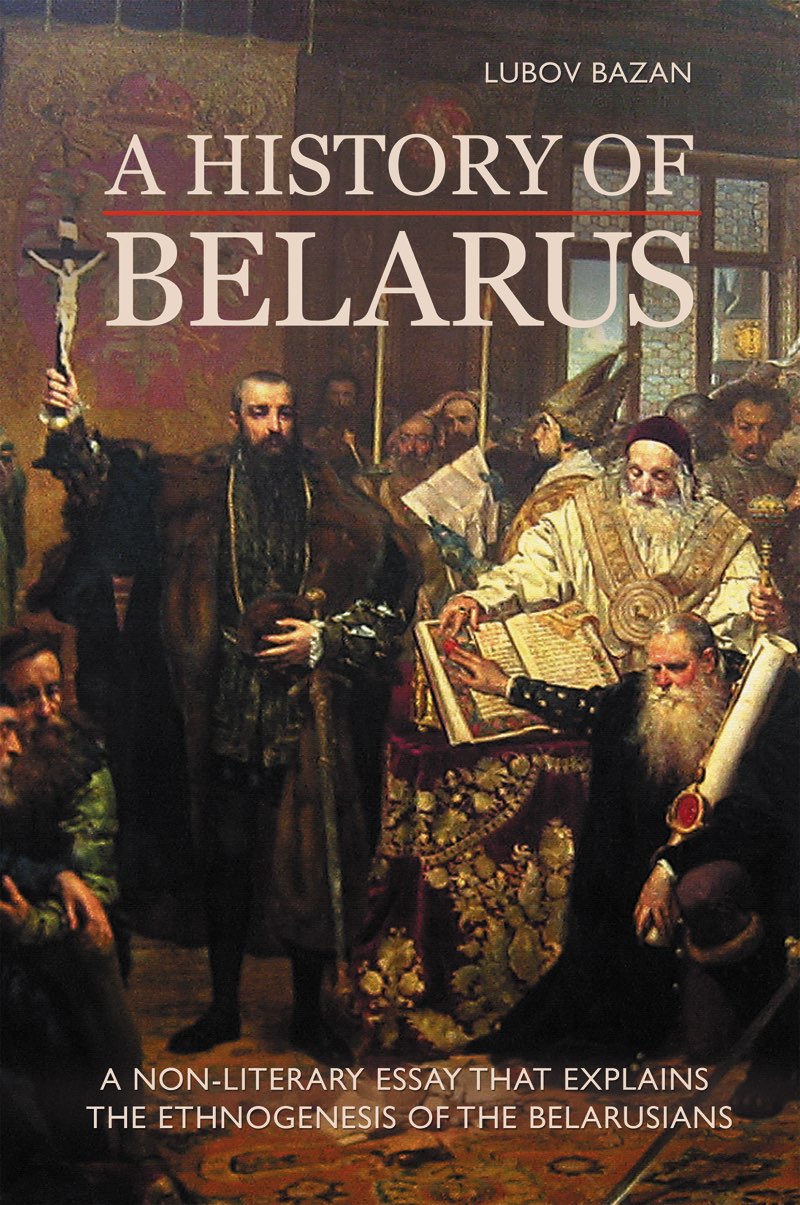A HISTORY OF BELARUS
A NON-LITERARY ESSAY THAT EXPLAINS THE ETHNOGENESIS OF THE BELARUSIANS
Lubov Bazan
Glagoslav Publications
A HISTORY OF BELARUS
A non-literary essay that explains the ethnogenesis of the Belarusians
by Lubov Bazan
Translated from the Russian by Callum Walker
2014, Glagoslav Publications, United Kingdom
Glagoslav Publications Ltd
88-90 Hatton Garden
EC1N 8PN London
United Kingdom
www.glagoslav.com
ISBN: 978-1-909156-61-6 (Epub)
ISBN: 978-1-909156-62-3 (Mobi)
A catalogue record for this book is available from the British Library.
This book contains content used for illustration or comment in educational institutions during instructional, research, or scholarly activities for educational purposes.
This book is in copyright. No part of this publication may be reproduced, stored in a retrieval system or transmitted in any form or by any means without the prior permission in writing of the publisher, nor be otherwise circulated in any form of binding or cover other than that in which it is published without a similar condition, including this condition, being imposed on the subsequent purchaser.
Foreword
O n 8 December 1991 the President of the Russian Federation Boris Yeltsin, the Chairman of the Supreme Soviet of the Belarusian Soviet Socialist Republic Stanislav Shushkevich and the Chairman of the Supreme Soviet of Ukraine Leonid Kravchuk signed a treaty in Belovezhskaya Pushcha National Park in Belarus on the withdrawal of their countries from the USSR and formed a new political union of three independent states with its capital in Minsk. Thus, at the stroke of a pen, the Soviet Union as a geopolitical entity and a subject of international law ceased to exist, making way for new post-communist states. The Republic of Belarus became a sovereign nation in the heart of Europe with its territory covering 207,000 square kilometres and a population of 9.5 million people.
But clearly this does not mean that the history of Belarus only began after this treaty had been signed in 1991. As a fixed historical territory, populated by a largely ethnically homogenous people, Belarus in fact has its origins in the 9th century, with the Principality of Polotsk, one of the first state entities in Europe.
Due to its geopolitical position, in its early history Belarus found itself on the juncture of two worlds, two great cultures and ideologies, becoming a region of mutual interaction between Byzantine Orthodox and Roman Catholic civilisations. This contributed to the peculiar political and cultural development that defined the countrys historic role in Europe. In spite of some dramatic historical periods caused by opposition and conflicts between these two powers, the Belarusian people preserved their distinctive ethnic and cultural traits that stayed with them for centuries to come. During periods of active Polonisation of Belarus, Orthodoxy was an important resistant force that maintained Belarusian language and culture, and in the 19th and 20th centuries, during Russian assimilation, Belarusians managed to preserve their own language and culture as a result of their particular past and resplendence accumulated from centuries old traditions.
Over the course of its history Belarus has been part of various state entities:
- Kievan Rus (9th-13th centuries),
- The Grand Principality of Lithuania (13th-16th centuries),
- The Polish-Lithuanian Commonwealth (16th-18th centuries),
- The Russian Empire (1795-1917),
- The Soviet Union (1917-1991).
A History of Belarus covers major periods of Belarusian history and attempts to reconstruct some peculiarities in detail. Moreover, readers can expect to encounter prominent historical figures throughout the book princes, generals, politicians and luminaries to serve as an introduction to the political history, military victories and defeats, and cultural achievements of the Belarusians, starting with material on the existence of Balts and Slavs on Belarusian lands, and ending with the formation of the independent Republic of Belarus in 1991. The factual material in this book is presented systematically and in chronological order. In case of disputable theoretical issues such as the ethnogenesis of the Belarusians, the emergence of the Belarusian language, the Belarusian identity and national consciousness, the problems of the Union between the Orthodox and Catholic churches, the author has chosen to outline all of the prevailing ideas in the field without giving preference to any particular slant.
PART 1
HOW IT ALL BEGAN: PREHISTORY AND THE ETHNOGENESIS OF THE BELARUSIANS
A rchaeological investigations revealed that starting with very depths of antiquity, Belarus had been a popular site with the first settlement dating approximately 40,000 years ago, during the Palaeolithic Era (Stone Age). Characteristic of this period tools were found at archaeological excavations in the southern provinces of Belarus. It was during this period that people still Palaeoanthropi with Neanderthals among them mastered fire-making and produced their first stone tools arrowheads, knives, scrapers the most primitive implements known to man. The arctic climate at the time as Belarus was in the preglacial zone sustained rather poor vegetation and animal life.
Two of the oldest Palaeolithic human sites are located in Belarus and thought to be 25,000 to 30,000 years old: one on the banks of the Pripyat River near the village of Yurovichi and the other near the village of Berdyzh (1). Only 50 to 60 prehistoric humans would have lived on these sites. Archaeological findings have shown that a tribal community structure existed at the time, and consumption of hunting and fishing produce was collective, with complete equality among members of the community. Several communities would come to be united in a clan, consisting of all of the relatives on the maternal side. Such a clan would occupy a specific territory, operate a common economy and share common property. The total population on Belarusian soil in the late Palaeolithic was no more than several hundred (2).
During the Mesolithic, which for all of Eastern Europe lasted from 9,000 to 5,000 BC, settlements were spreading actively in the territory of Belarus, especially in the Neman, Western Dvina and Dnieper river basins w extensive and rich supplies of fish and waterfowl. After the retreat of the glacier towards the north and the significant temperature increase that occurred in 9,000 to 8,000 BC, Belarus became quite attractive for the rapid settlement of the land. Vast forestation and diverse fauna were more conducive to life. Belarus settlement during this period primarily came from three directions from the Russian Plains to the north-east, from the Balkans and the Black Sea to the south along the Dnieper, and from Western Europe through Poland. The people arriving from these areas belonged to different ethnic groups, and so in ethnic terms there has never been a homogenous Belarus.
On the shores of the Dnieper, Neman, Pripyat and Western Dvina archaeologists have found more than 100 Mesolithic sites, each inhabited by 20 to 30 people. The population of Belarus at the time was approximately between 5,000 and 6,000 people whose life style was characterized by the primitive communal system. Based on the obtained data, itd be safe to conclude that specimens from the same clan used identical methods to process materials, manufacture tools, hunt and fish, and built identical housing structures.



